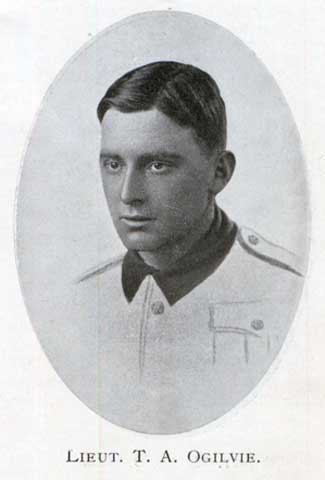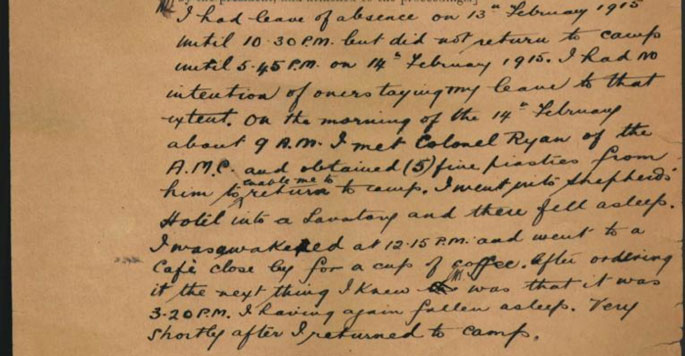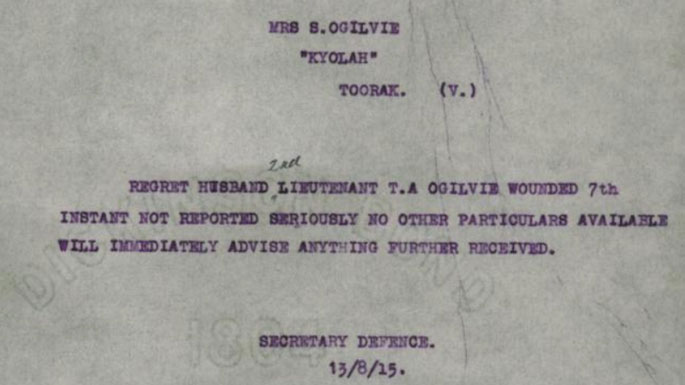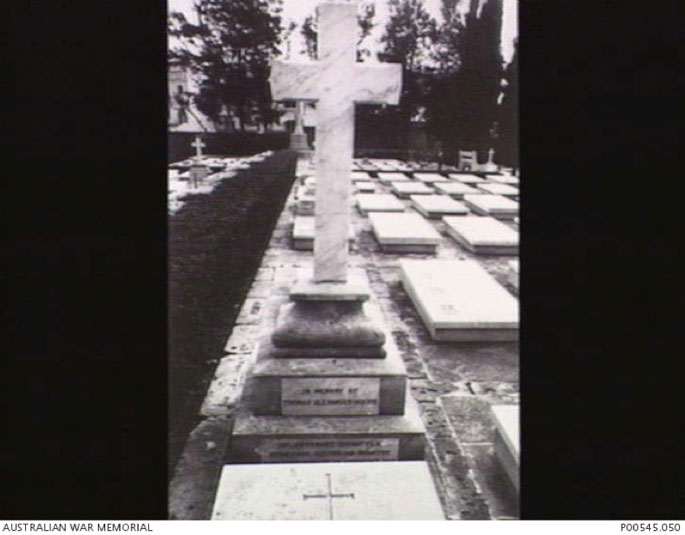Thomas Alexander ‘Alec’ OGILVIE

Alec Ogilvie was born on 7 January 1887 in Williamstown, Victoria. His parents were Captain John and Elizabeth (née Henderson) Ogilvie. He attended Scotch from 1898 to 1905. Alec was a Prefect in 1904. He had a formidable sporting record. He was in the first rowing crew in 1903 and 1904. He played Firsts cricket in 1904. His finest achievements were in football, in which he was in the Firsts in 1902, 1903 and, as captain, in 1904. He played football for Melbourne in the VFL competition in 1905. His obituary in the 1916 The Scotch Collegian described him as ‘a brilliant rover and half-forward.’ It continued: ‘He was especially quick, neat and clever, and was one of the mainstays of the football teams’..
Alec was a solicitor when he enlisted on 4 September 1914 at Morphettville, South Australia. He served in the 12th Battalion with the rank of 2nd Lieutenant. His Regimental Number was 721.
Alec died on 18 August 1915 at Malta. He was 28 years of age.
Service record
Before the war ‘Alec’ Ogilvie had obtained his law degree at the University of Melbourne and joined his brother-in-law’s practice in Rutherglen and Corowa. However, it was while on a visit to Adelaide that he decided to volunteer for the AIF. He had five years of experience in cadets, and on enlistment was made a Corporal. Six weeks later he was promoted to Lance Sergeant, but on 25 February 1915 was reduced to the ranks as a result of a court martial for overstaying his leave in Cairo (his defence at the court martial is reproduced below).
On 1 April he rose again to Lance Corporal, then Corporal on 1 July. In the meantime he was with the 12th Battalion when it landed at Gallipoli on 25 April. On 10 July, he was promoted to 2nd Lieutenant (see copy below). On 6 August he received a shrapnel wound to the right eye while his unit moved into the southern part of the Lone Pine position at midnight. This is mentioned in the Australian official history.
A telegram to his wife Sadie dated 13 August suggested it was not serious (see below). On 12 August he was taken from a hospital ship (the Dunluce Castle) to the Auberge de Baviere hospital, Malta, where he was categorised as ‘dangerously ill’. On 18 August he died of his wounds, then categorised as ‘GSW skull’: gunshot wound to the skull. He was buried that day.
Alec Ogilvie is buried in the Pieta Military Cemetery, Malta.
Photographs and Documents:

Changes in rank for T.A. Ogilvie (from service record, NAA B2455)

Alec’s defence at his court martial, at Mena Camp, Egypt, 25 February 1915 (from service record, NAA B2455)

Telegram to Alec’s wife (from service record, NAA B2455)

Alec Ogilvie’s grave in Malta
Sources:
- Australian War Memorial – Roll of Honour
- Bean, C.E.W., Official History of Australia in the War of 1914–1918: Vol. II, The Story of ANZAC from 4 May, 1915, to the Evacuation of the Gallipoli Peninsula, Angus & Robertson, Sydney, 1941
- Mishura Scotch Database
- National Archives of Australia – B2455, OGILVIE THOMAS ALEXANDER
- Scotch Collegian 1916
- The AIF Project - https://www.aif.adfa.edu.au/showPerson?pid=229697